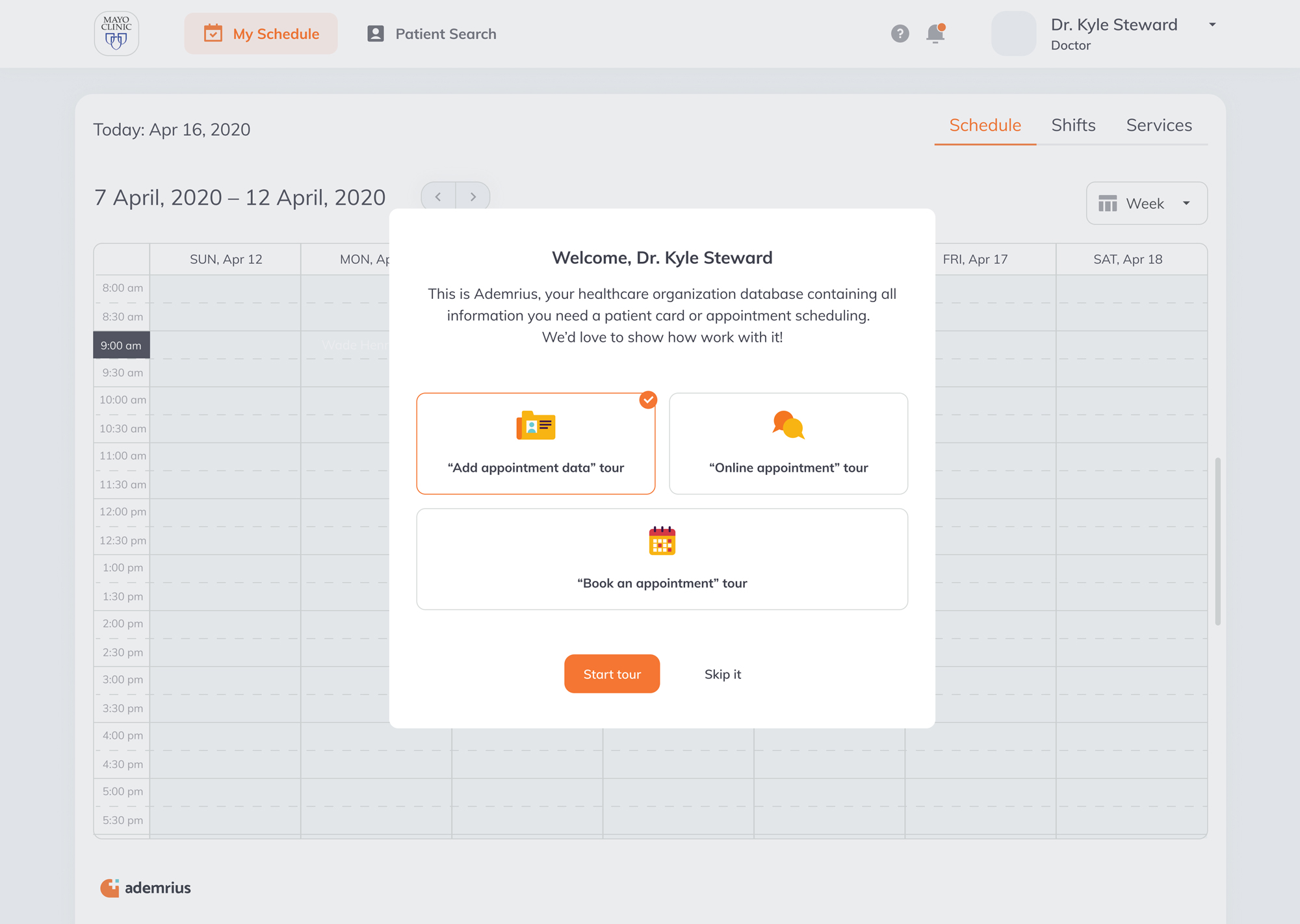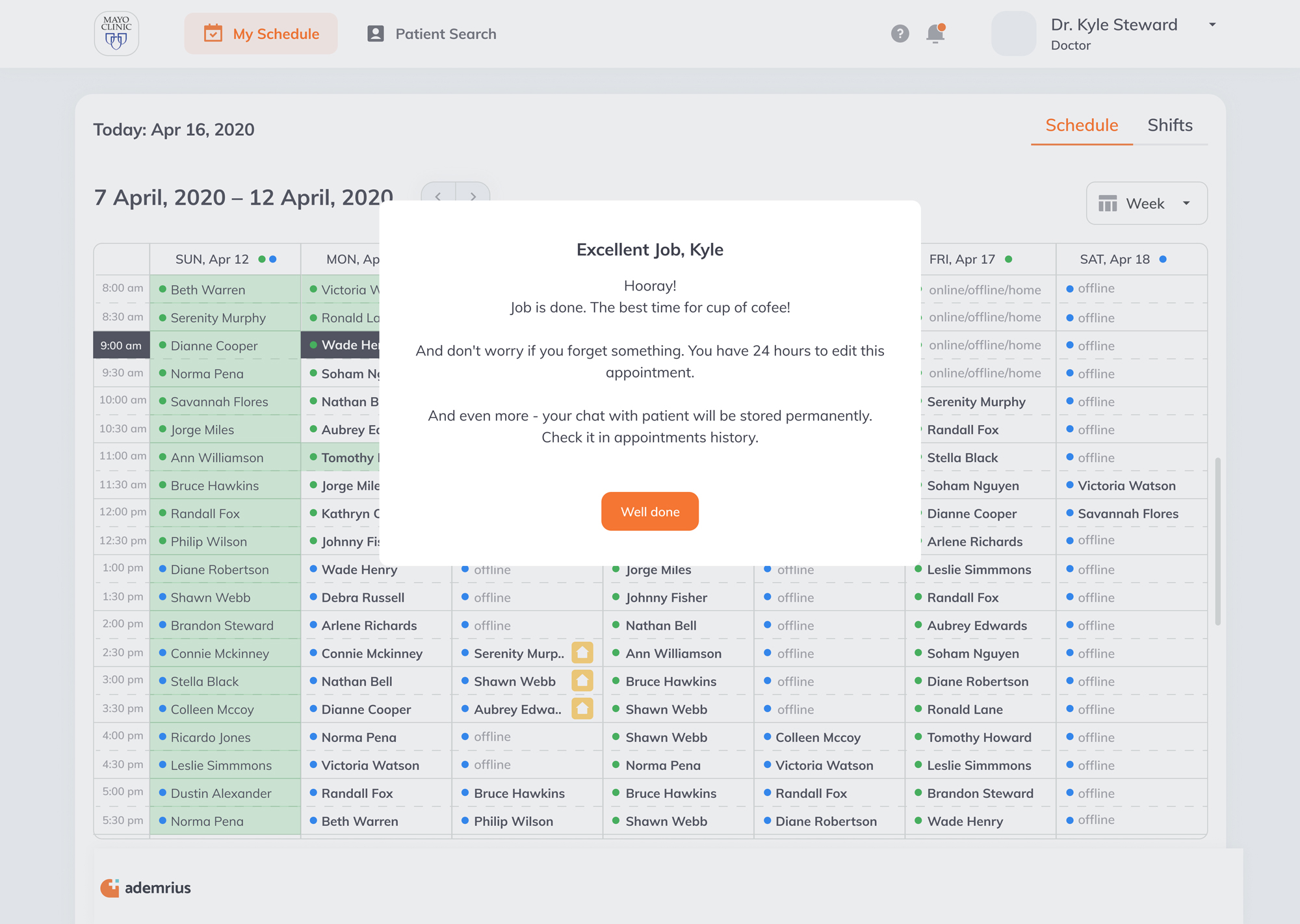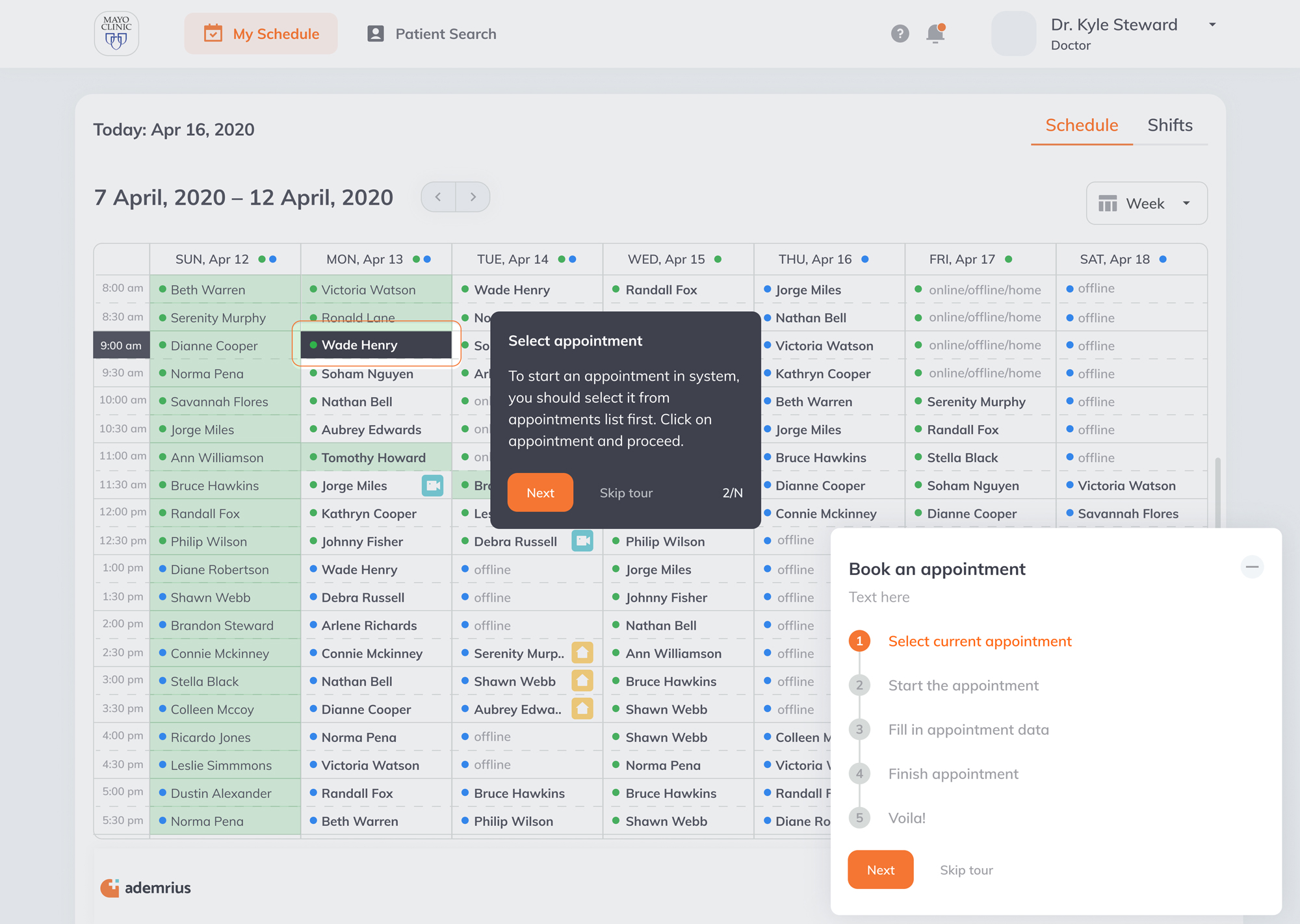The ultimate guide to launching a digital product redesign
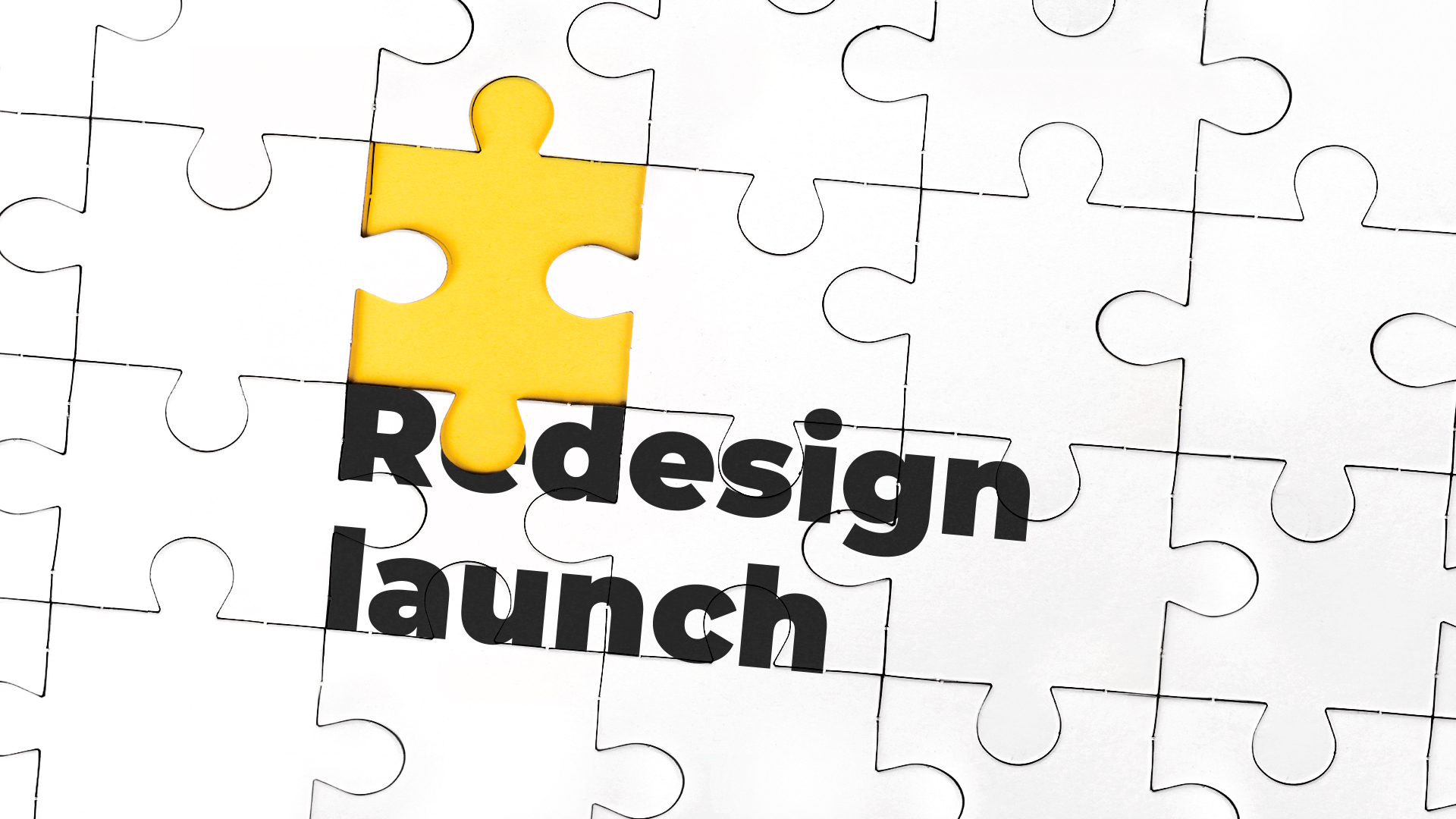
Do you feel that your product design is a little bit outdated? Wonder how to increase your retention rate? Do you want to grow your platform user base? A redesign can solve all those issues. In this guide, you’ll get an overview of industry best practices that ensure a successful redesign launch.
Assess your readiness for changes
A redesign is deemed to be a yellow brick road to success. However, bumps can still happen along the way. But whether they will be petty things that can be fixed in a few clicks or fatal errors that will cost you time, money and customer loyalty depends solely on one thing – planning.
If you do things randomly, you will always get a random outcome.
Good planning starts with defining the scope of the project. The team has to know which areas are worth channeling their creative efforts into, and which should remain unchanged. It might seem easier said than done, but only until you figure out the real goals and expectations of your project.
When redesigning a product, it’s important to have a clear outline of the procedure you will follow. The first step is carrying out user research, defining the metrics to measure the success of your redesign, and outlining the value proposition. This will enable you to make design decisions based on data, not assumptions. Then you have to establish the perspectives of the project and evaluate associated risks. Only after that, you are ready to create a structure for the redesign process.
This guide will help you generate a clear plan on how to win with digital product redesign and make the transition smooth.
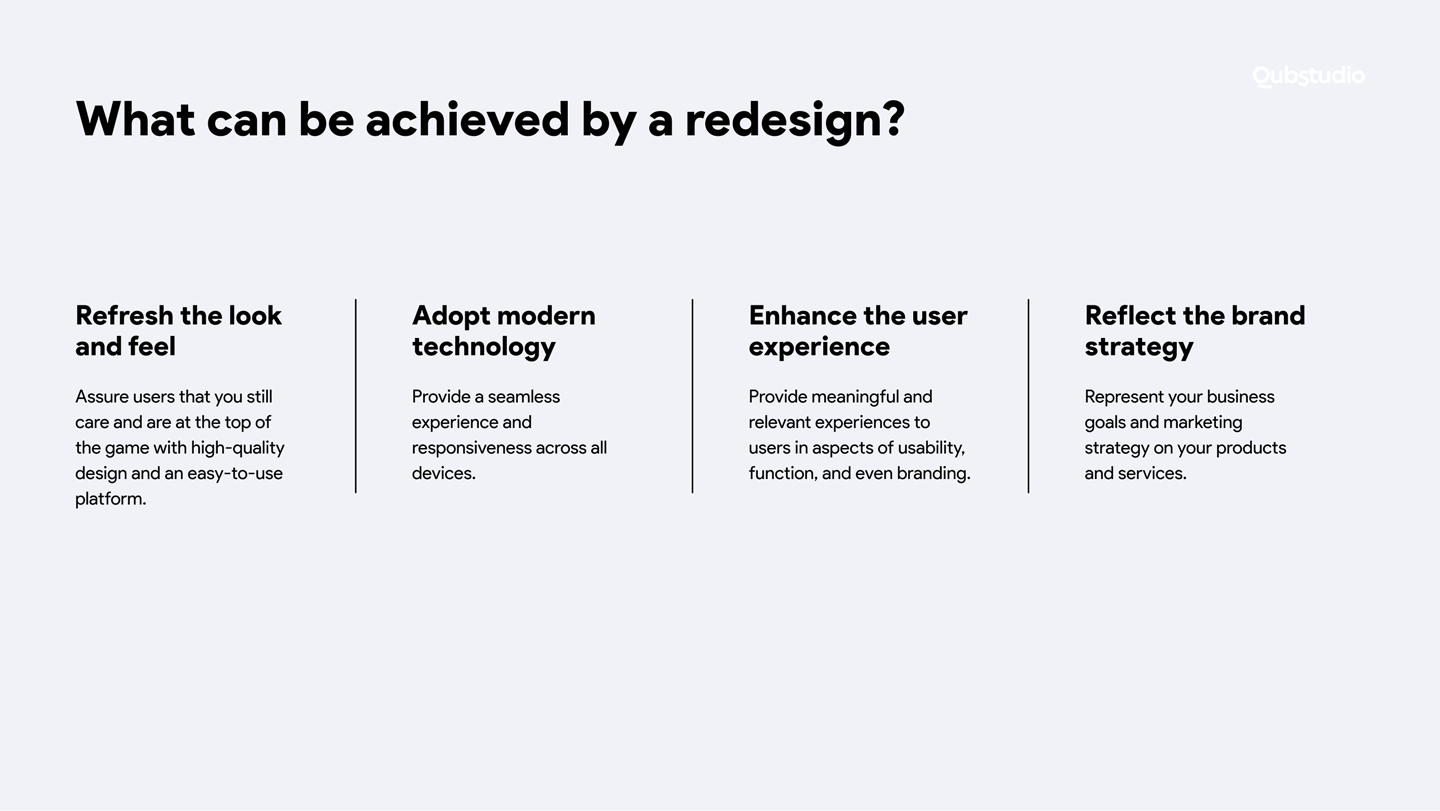
Beware of the pitfalls
Once you figure out what is the major driver behind the change you will know what direction to take. Assessment of potential risks, on the other hand, will help you understand where you shouldn’t go.
Here are some of the issues that can hamper the launching process of your new product design:
- Natural resistance to change
People usually don’t like to see changes made to their favourite products. To mitigate the risks of negative feedback you need to find out what users love about your product and which features they complain about. - The project is hard to execute
Members of the team may also be in opposition to the proposed changes. This is because it might be more challenging for people to come up with new ideas when a working solution is already in place. - Potential customer retention rate drop
To avoid losing your customers to competitors you need to keep up with users’ expectations. That implies adopting the latest industry standards and providing your clients with the best customer service they can get.
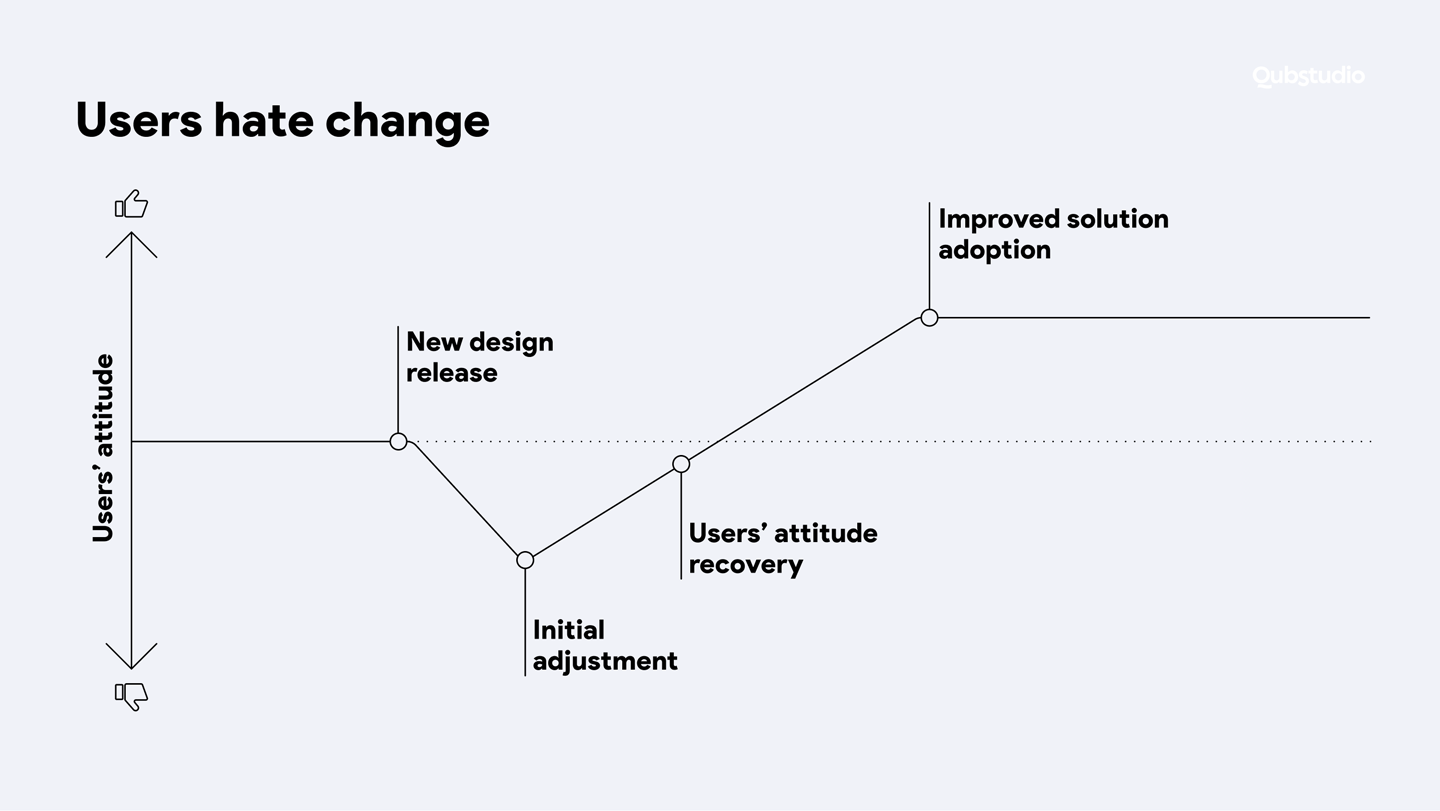
Redesign development and launch
Now that the groundwork is done you can proceed with the implementation of new features. Your first step is to deconstruct the original solution to see how it works and which of its components need to be reconsidered.
Let us look at the redesign from two sides.
- Revolutionary redesign.
It’s a one-time change that enables the product to remain fairly static between updates. Revolutionary redesign forces the development team to build an entirely new product every time, and the first launch users visit the platform’s complete new version. And finally, if the old version is still set as a default, visitors will see a welcome message calling them to try out the revamped system. - Evolutionary redesign.
This is, contrarily, a feature-by-feature implementation. It allows for gradual, incremental, and educated modification and is rooted in analytical data and user feedback which smoothens the transition. The redesigned platform launches with a welcome message and a product tour, guiding users through essential changes.
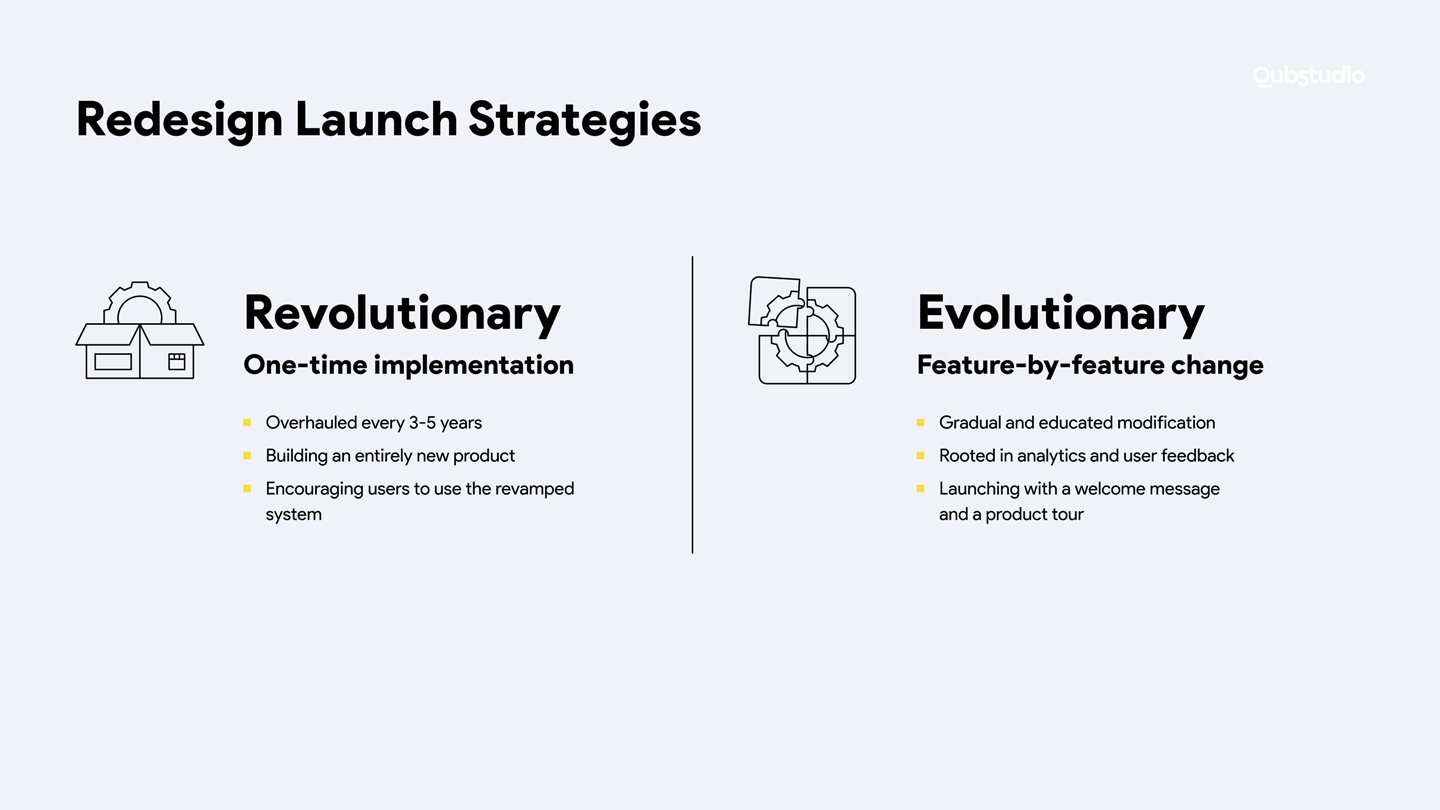
How to make sure that your redesign works
Re-imagining the product is not only about modernizing the overall look and feel of the platform. It has more to do with optimizing site performance and streamlining the user experience.
The redesign is meant to improve products for customers. But how to make sure they will like it? Here are some tips to consider:
1. Conduct User Testing
When planning the redesign project, always leave some time for user testing and design adjustments that will follow. It is the key to ensuring that a final product meets the unique needs of your audience. Gaining feedback from real users early in the development process is also a guarantee that your product team doesn’t waste time on the implementation of debatable solutions.
- A/B testing
Users are presented with two or more design options and are asked to select the better one. It works best if the difference between old and new versions is as simple as a headline, button shape, or colour scheme. - Moderated usability testing
The respondent is asked to perform certain tasks under the moderator’s supervision. This technique helps to understand user behaviour and is best suited for collecting qualitative feedback. - Unmoderated usability testing
The entire study is completed online. A software application provides instructions to participants, records their sessions, and can ask predetermined follow-up questions regarding their actions. This technique is used to test specific components of a product rather than providing an overall review of the user journey. - User interview
It is a one-on-one conversation intended to provide in-depth information about user experience. A researcher asks an interviewee elaborate questions about a topic of interest.
Your product can also benefit from other less common types of user testing including card sorting, eye-tracking or beta testing.
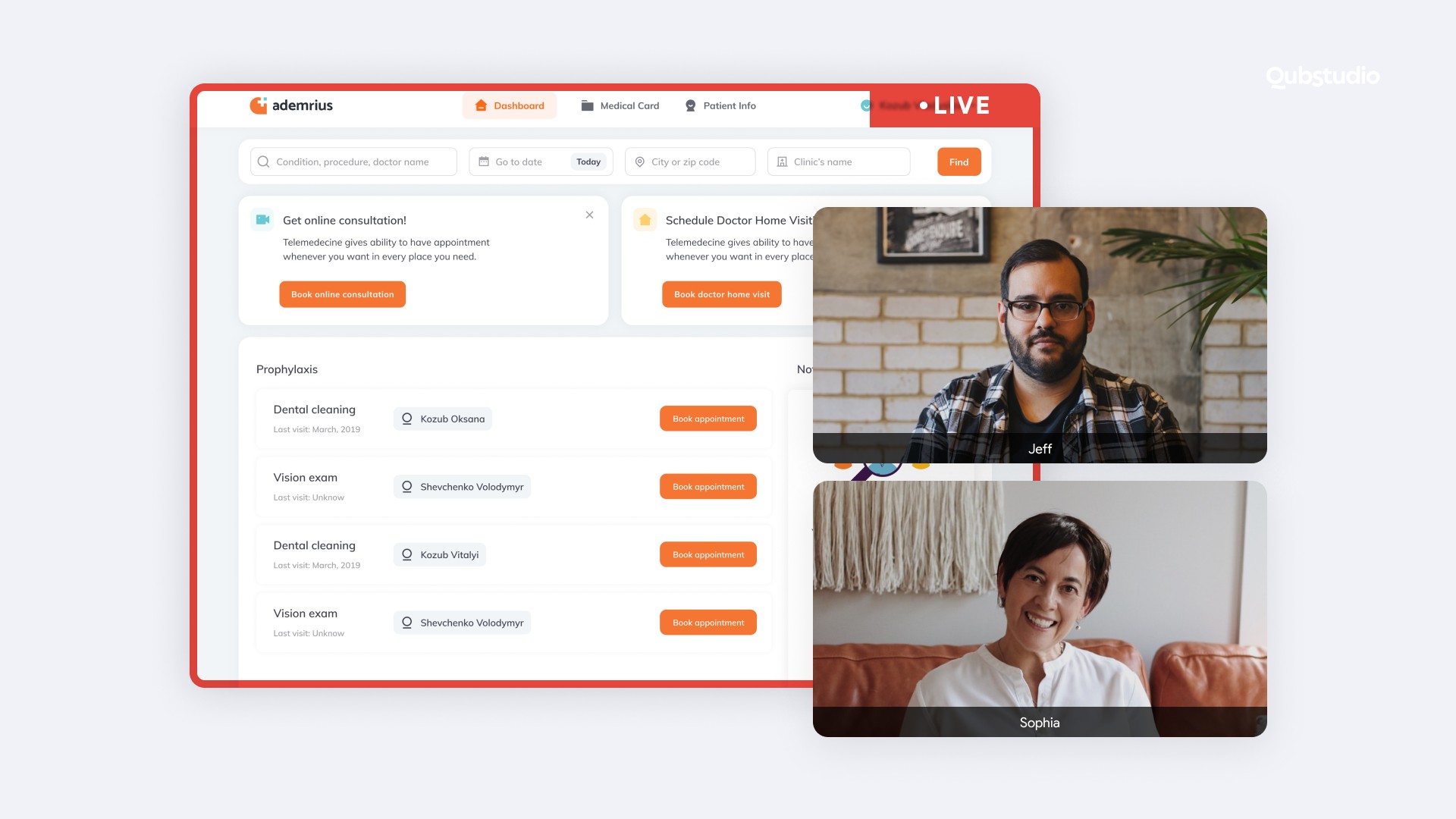
2. Run Marketing & Communication campaign
Redesign may not require the same kind of heavy marketing as launching a new product, but it still needs to be performed with great care. If you decide you throw a renewed layout at your users without any warning, they can oppose even the most superior UX and state-of-the-art UI. However, the meticulous communication strategy can be a real game-changer.
There are several ways to deliver news about product design upgrades to your customers:
- Pre-launch announcements
Start running the marketing campaign several weeks before the release. You can send an email newsletter to inform your users about the upcoming change. Focus on some of the major improvements in your announcement, so that your clients know what to expect. You can also create engaging in-app notifications and offer users a sneak peek at the new design. - Educational content
If the functionality has changed during the redesign, you’ll want to be more thorough in your communications. Bring the marketing and design teams together to work on instructional content, which can be anything from screenshots for your new release, to cool GIFs and video tutorials. These materials should circulate online weeks before and after you introduce new features. - Countdown timer
This is a great marketing trick to boost anticipation. Place the timer within the platform, on your company’s website, or in the sidebar of the product’s blog page. - Deprecation notice
If the update is opt-in for the users with the initial launch, the deprecation date of the old version must be communicated beforehand. In addition to that, you should clearly indicate what features will no longer be supported in future releases.
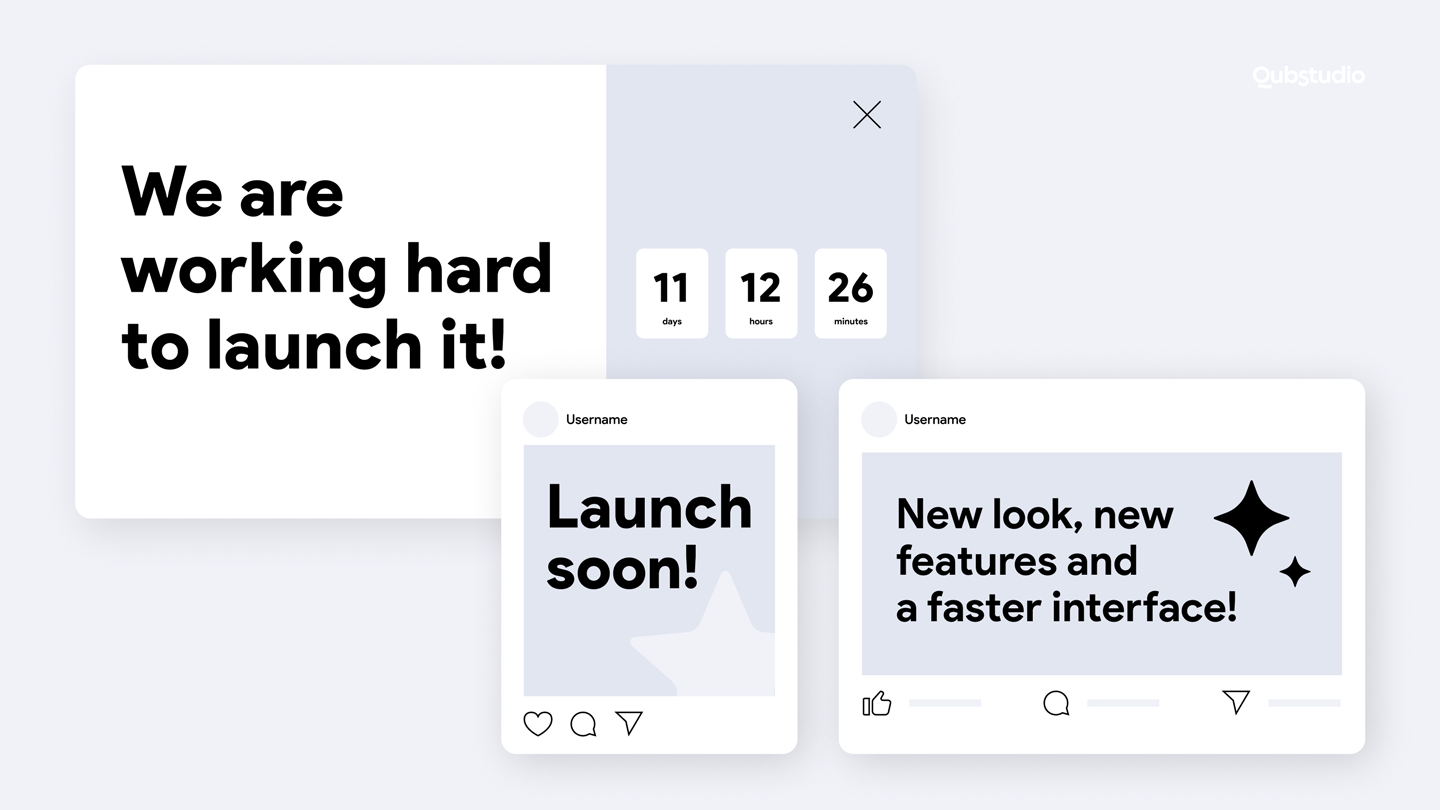
3. Implement User Onboarding
Onboarding refers to a series of interactions and techniques aimed at guiding customers through the new features and demonstrating the value of those improvements.
The purpose of onboarding is to comfort the user and give a concise introduction to the product.
You can use the following techniques to highlight the benefits of your digital product redesign:
- welcome message is a short greeting designed to start communication with a user;
- first-look tour quickly introduces the site and convinces visitors to explore it;
- progress bars encourage users to complete the onboarding tasks and introduce the element of gamification to the process;
- explainer video offers the review of the product benefits and functionality;
- tooltips display informative text when users hover over, focus on, or tap particular layout elements;
- empty state is a blank space that has yet to be filled with the content created by users;
- hot spots attract attention to certain features that play a key role in the user environment.
Tutorials, screenshots, webinars, or walkthroughs you include on your website should also be considered part of the onboarding experience. The same goes for emails, blog posts, and social media. All of your communication tools should take users straight to the most important features that they want to explore and demonstrate how to utilize them.
Qubstudio perspective
The process of product re-imagining poses a lot of challenges, but it also leaves plenty of room for improvement. Our team of experts has studied and tested out industry best practices to assure a successful digital product redesign launch. The figures below illustrate how Qubstudio approaches product redesign launch.
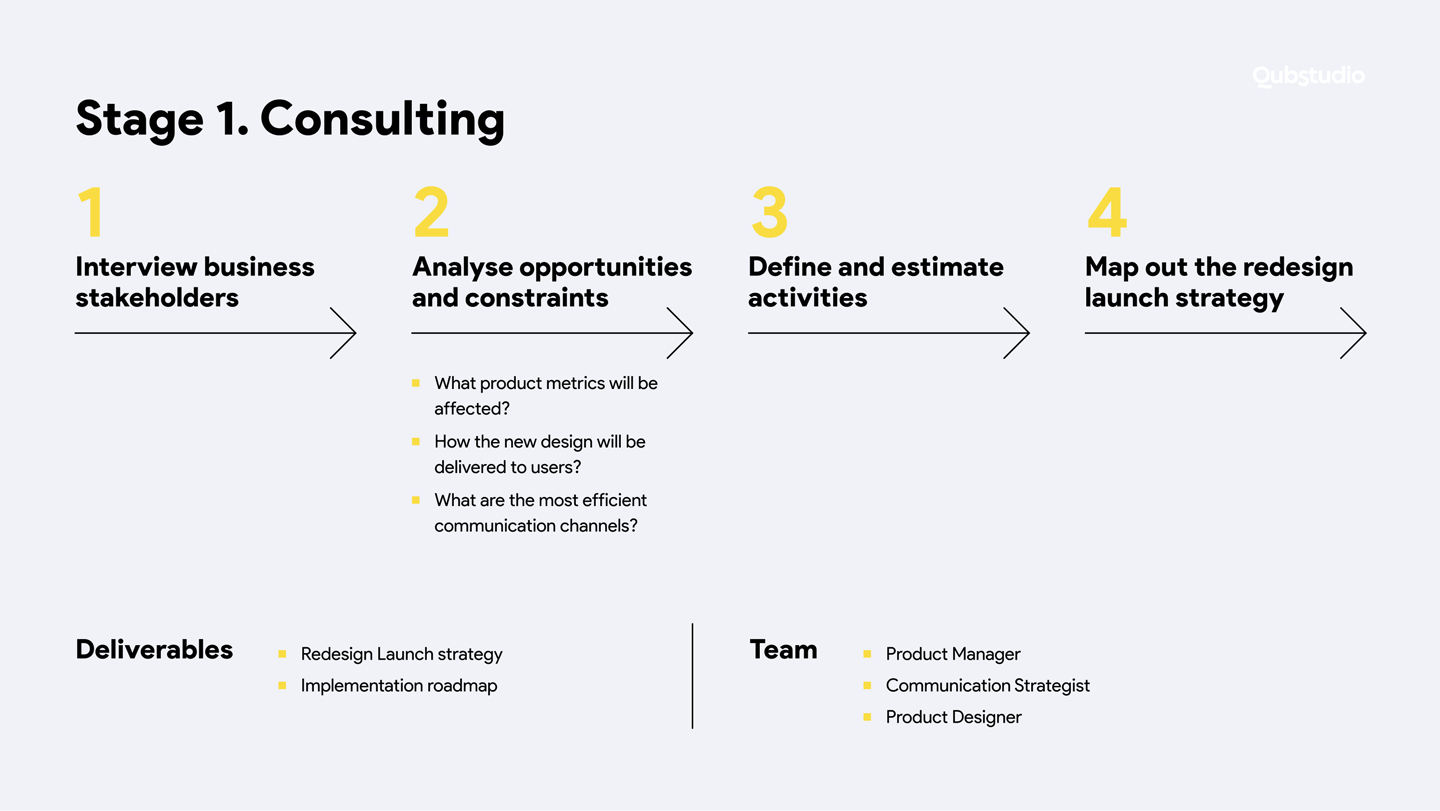
Iteration of the product only becomes the driver of progress when it’s backed by customer empathy and common understanding among the key stakeholders. The interview with a business owner helps to identify special requirements, potential opportunities and constraints of the redesign project. The key aspects we delve into during the interview session are the following:
- Redesign trigger (internal/external)
- Target audience (same/new)
- Markeing strategy (B2B/B2C/etc.)
- Type of change (UI only/UX only/UX & UI)
- Technical feasibility to support two versions for user adaptation period (yes/no)
Another vital element of redesign strategy is deciding on the most efficient communication channels that will inform consumers of the new design in a natural engaging way. In addition to that, our job here is to estimate the marketing and communication efforts needed to get the ball rolling.
Finally, we collect all the pieces together to map out the digital product redesign launch strategy. The design roadmap is always a tailor-made solution crafted in line with your business drivers, goals and expectations.
You can use the suggested project outline as a source of guidance for your in-house team. Or contact us to help you with the next stage.

As soon as all stakeholders have a shared vision of the redesign launch strategy, our team is ready to put it into action. Multiple experts from Content Writers to Product Designers are working on incremental deliverables while a Product Manager is in charge of orchestrating the overall redesign launch.
We start with building a communication toolbox that serves as a guideline for all outlined redesign launch activities. Generating content and designing supportive materials are continuous tasks that cover marketing and communication demand including social media posts, in-app announcements, animation clips, etc.
In parallel, a Product Manager and Product Designer closely collaborate with the development team on mapping out and following the release plan.
If you’d like to talk about your product or how to launch your redesign for success, get in touch with us.


